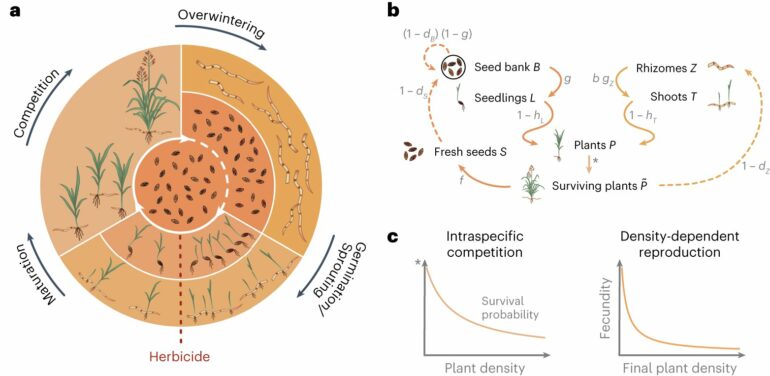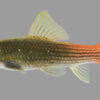Weeds have always been a significant problem for agriculture. They compete with crops for resources such as light, water and nutrients, which can result in severe yield losses.
Researchers at the Max Planck Institute for Evolutionary Biology in Plön and the Julius-Maximilians-Universität Würzburg (JMU) along with Würzburg biology professor Chaitanya S. Gokhale have developed a mathematical model on population dynamics and evolution of herbicide resistance in perennial weeds that enables predictions for a specific weed. The study was recently published in Nature Plants.
Herbicides as a milestone
The introduction of herbicides in the second half of the last century was a major breakthrough for weed control in conventional agriculture. Herbicides allow efficient removal of weeds with particularly low labor input and have largely replaced manual or purely mechanical removal.
However, over the years, several species have developed resistance to various herbicides, which poses a great challenge to agriculture and can ultimately threaten food security. Herbicide resistance occurs spontaneously and may already be present at low frequencies in weed populations that have never been treated with the herbicides. When herbicides are applied, resistant plants have a competitive advantage, and their share of the population increases rapidly. Once the proportion of resistant plants is high enough, the weed population is no longer suppressed by the herbicide.
Perennial weeds pose a special challenge
Perennial weeds such as Johnson grass (Sorghum halepense) are particularly difficult to control and can lead to immense yield losses. The reason for this is that they reproduce sexually via seeds but can also reproduce vegetatively through shoot axes growing horizontally underground, the so-called rhizomes. An inactive seed supply in the soil ensures that the weed population will grow again the next season. Better control can be achieved here by additional tillage and appropriate crop rotations. Similar to the use of antibiotics, a combination of different herbicides or their rotation can delay the emergence of resistance.
Weed control methods can be investigated in field studies. However, these are naturally limited in duration and number. Mathematical modeling has proven extremely valuable for predicting population dynamics and resistance evolution in weeds. However, most models only deal with annual plants, as the life cycle of perennial weeds is very complex.
Possibility of prediction
The model now presented makes it possible to predict population dynamics and the evolution of herbicide resistance in johnsongrass. It maps the complex life cycle of the plant and the effect of herbicides and tillage. This also allows to investigate the impact of specific features of the life cycle on the control of perennial weeds and the emergence of resistance. Using computer simulations, the researchers found, among other things, which control strategies are effective in delaying the evolution of herbicide resistance and keeping the weed population small.
Combinations of several herbicides with different modes of action are clearly superior to rotations and monotreatment in controlling johnsongrass populations and herbicide resistance. They reduce the risk of herbicide resistance and weed control failure. In this context, however, the scientists also discuss a potential increase in environmental impacts due to the use of more herbicides.
Herbicide rotations, on the other hand, cannot delay the emergence of resistance, but they slow down the growth of resistant subpopulations. The results further indicate that tillage is an important factor in the control of johnsongrass. The weed density and thus the risk of weed control failure is reduced.
The developed model contributes to a better understanding of the emergence and spread of herbicide resistance in weed populations. The study can thus help to develop sustainable weed control strategies.
More information:
Dana Lauenroth et al, Theoretical assessment of persistence and adaptation in weeds with complex life cycles, Nature Plants (2023). DOI: 10.1038/s41477-023-01482-1
Provided by
Julius-Maximilians-Universität Würzburg
Citation:
Mathematics against weeds: Model of population dynamics and evolution of herbicide resistance in perennial weeds (2023, August 18)



